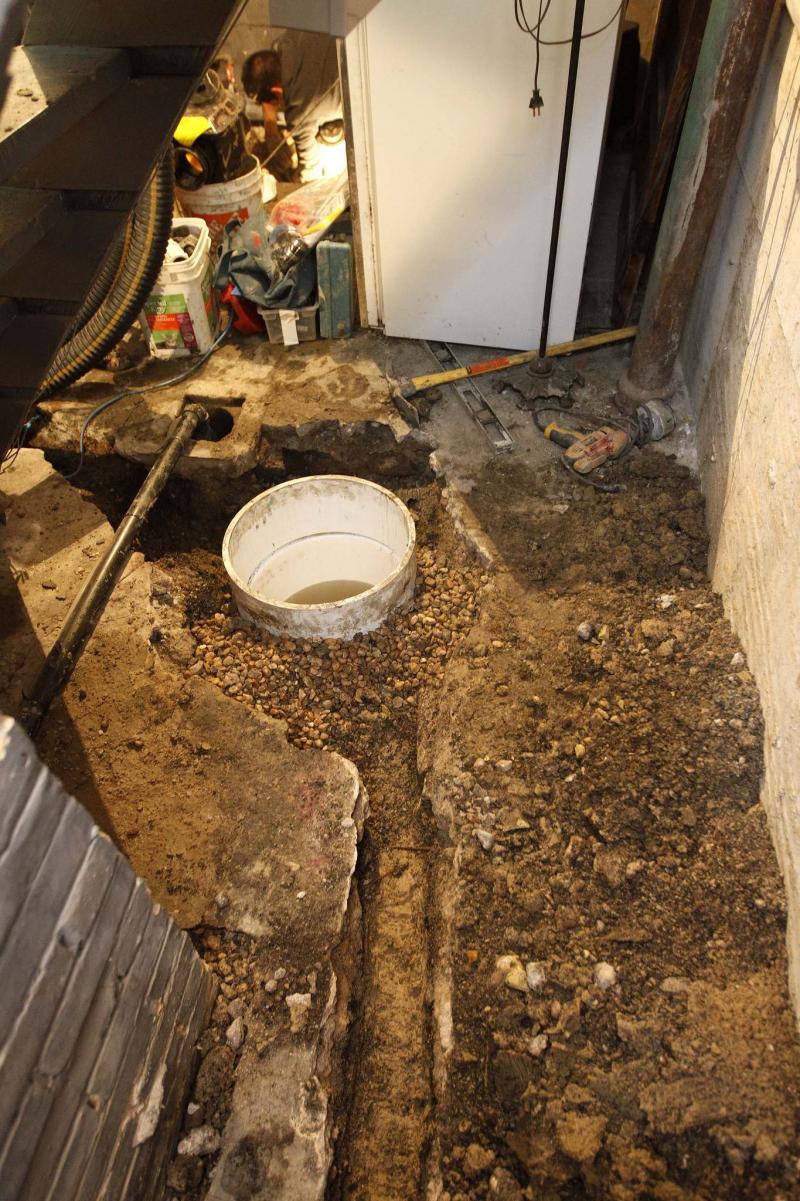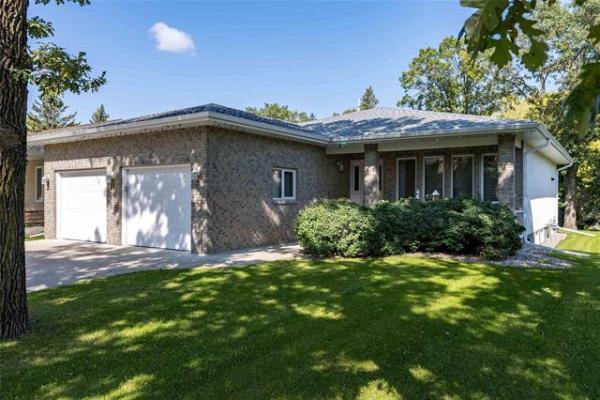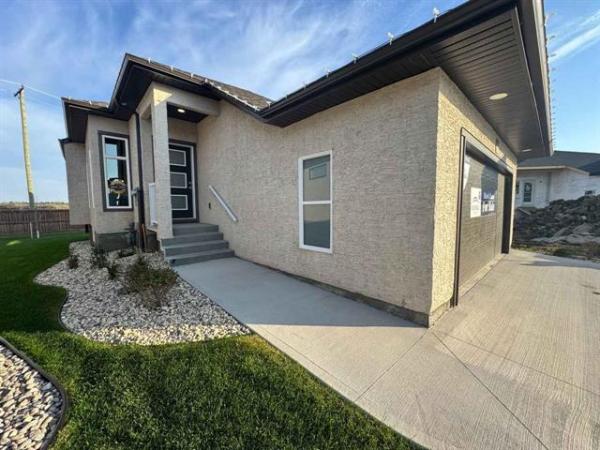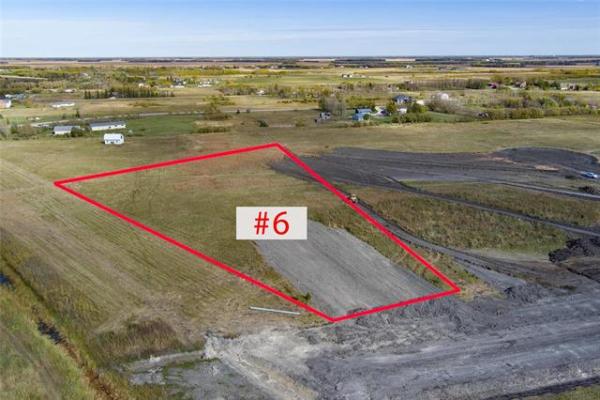
TREVOR HAGAN / WINNIPEG FREE PRESS
A freshly dug sump pit. The water collected in this system can be used to water your garden or lawn.
Question: I have a question for you regarding the water that comes out of the sump pit. We have two large rain barrels and have been collecting this water from the hose as it pumps out of the basement. When the barrels are full, the hose carries the water out to the street. We have been using this water to water our bushes and flowers for a few years now, and everything is growing well. I was wondering if this water is safe to water our vegetable garden? I’ve noticed people who leave their hose out on their driveway have the water staining their driveway almost black. The water looks clear in the barrels.
Thanks, Susan M.
Answer: I have received many questions about sump pumps over the years, but yours is certainly interesting and unique. I am a big fan of rain barrels and use one to water my gardens. There should be little problem with the use or this water, and actually environmental benefits, unless there are any additional items draining into the sump.
The sump pit in your basement or crawl space in a newer home is typically located at the terminal ends of the weeping tiles. These plastic pipes run underground at the base of the foundation walls, collecting excess moisture from the soil. These are then connected to the feeder pipes that slope gradually under the basement floor to the sump. Because the water entering the sump is normally just from precipitation or melted snow, there should be no inherent problems with the water quality. Combine this with the filtering effects of the soil or granular fill around the home and there should be little consideration of contaminants.
Rainwater may collect minerals, soil particles or other items on its way from above grade to the sump, but rarely is that an issue other than for potential damage to the pump. In soils that are high in minerals such as calcium, significant deposits can often be seen at the bottom of the sump or on other components inside. These minerals can be quite corrosive and may cause premature deterioration to the sump pump. Despite this, I doubt there should be any health or safety issues with using this to water your veggies. Your garden will be growing in the same soil conditions that filter the sump water, so anything that may absorbed by the plants in the future should be the same as what is already occurring. The only thing that could change this opinion is if you are draining anything else into the sump.
It is quite common for some homeowners to drain some mechanical systems into the sump pit if there is no floor drain nearby. All newer natural gas furnaces and air conditioners produce condensation while operating, and this condensate has to be drained. The clear plastic drain pipes normally will terminate at a nearby floor drain connected to the waste-water system. If the floor drain is located on the other side of the basement, alternative drainage sites are often used. These can range from an improper hole drilled directly into the concrete floor slab to a proper drain and trap in a nearby plumbing drain pipe. If the sump pit is located near the furnace, it can also be used as a drainage site for the condensate, but there may be one main concern with this method.
The water that drains from furnaces or air conditioners may look clear but often contains dissolved components that drastically change the PH of the water. If the PH is too high or too low, it may be considerably more acidic or basic than normal rainwater. While this is normally only a consideration for the pump or the vegetation where the pump is discharging, it could certainly affect the vegetables in your garden in your proposed scenario. This should be easily testable with standard litmus paper, but further research may be needed to determine how this will affect your garden, if that is the setup with your current heating or cooling systems.
The simple solution to this potential issue is to find a different drainage site for your mechanical condensate drains. That can easily be accomplished by installation of a small condensate pump near the furnace. These small pumps are relatively inexpensive and are very common in new high-efficiency furnace installations. The condensate drains through a standard hose into the pump reservoir, which activates when the water reaches a certain level. The pump is connected to a discharge hose, which can be run to any standard drain in the basement or laundry sink, no matter how far away from the source. This could even be installed just to prevent running a condensate drain hose across the basement floor, where it might be unsightly or a tripping hazard.
Once you have successfully ensured only water from precipitation is draining into your sump and rain barrels, there should be little reason not to use it for watering your veggies. My own rain barrel drains the water from my garage eavestroughs, after it has run over the shingles. There may be some residual material dissolved in the water from the bitumen-based shingles, as well as the rotting leaves and tree litter collected in the troughs, but it has not affected my plants. As far as the stains on your neighbour’s driveway, that is likely mould, moss or dirt which is concentrated due to the constant wetting of the same area over and over again.
Water collected by the weeping-tile system and ejected from the home by a sump pump can be useful in watering grass and gardens, reducing the use of municipally treated water. This will not only save you money, it may help the environment by preserving our precious water supply for human-consumption purposes. As long as you take care not to drain other sources such as condensate hoses from heating and cooling systems into your sump, there should be little concern and only positive environmental results.
Ari Marantz is the owner of Trained Eye Home Inspection Ltd. and the past president of the Canadian Association of Home & Property Inspectors — Manitoba (cahpi.mb.ca). Questions can be emailed to the address below. Ari can be reached at 204-291-5358 or check out his website at trainedeye.ca.
trainedeye@iname.com



